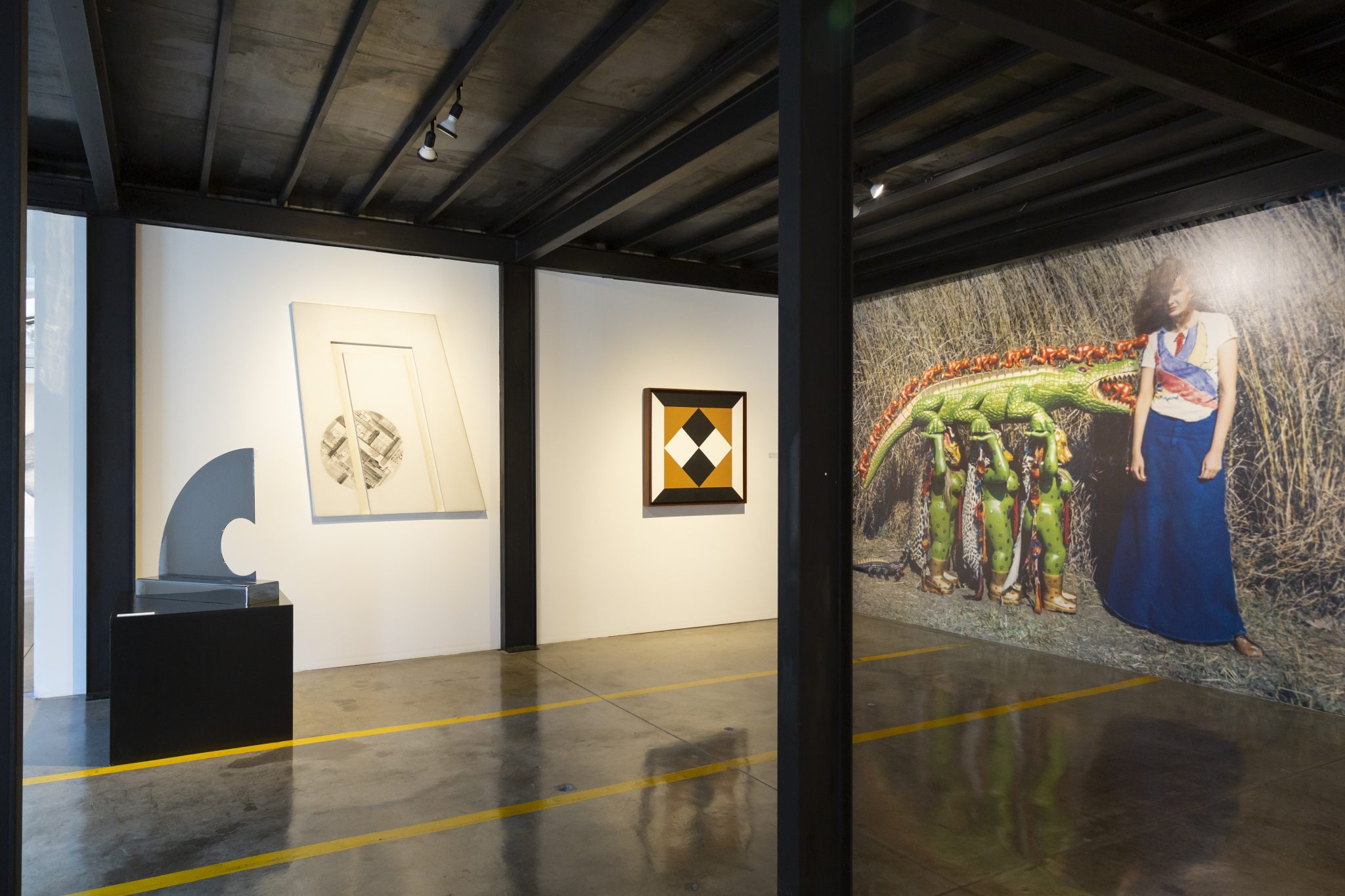A Universe, Documented at La Nueva Fábrica, Antigua looks back on the artist’s legacy in the country and Latin America as a whole
In the heart of the historic city of Antigua, a retrospective of the uncategorisable Guatemalan artist Margarita Azurdia is on view. The show highlights the material, visual and conceptual legacy of her life and work, both for the Central American country’s art scene and for Latin America as a whole. It includes a dozen medium and small-format paintings and textile works of geometric abstract language; a medium-sized sculpture made with found materials; a series of video recordings of ritual performances from the 1990s; a conceptual map on the wall synthesising her thoughts; and a hundred documentary sources such as press clippings, writings, letters and photographs, among others.
Born in Antigua in the spring of 1931, Azurdia navigated her early years between international schools and academies before returning to her country during the early 60s and holding her first solo exhibition in 1963, which made a lasting impression in both public and intellectual-circles. Her early endeavours took the form of medium-sized paintings and panels with colour fields and geometric shapes.
From that moment on, no disciplinary boundary could contain her voracious appetite: textile, sculpture, video, performance, photography, poetry, all media were absorbed by her expansive drive. Rosina Cazali, in the curatorial presentation, describes her as a ‘dissident of conventionalism’. Azurdia was a multifaceted artist who enjoyed confusing her audience with her name changes: Margot Fanjul, Anastasia Margarita or Margarita Rita Rica Dinamite.
The exhibition identifies three areas in which Azurdia stood out: the object, the body and the archive. During the early 70s, she abandoned the geometric paintings for polychrome sculptures that drew inspiration from the imagery of the Popol Vuh, the sacred book of the Mayan Quiché people. She had the pieces carved by local artisans and then adorned with feathers, clothing, ceramics and other materials, in a manner reminiscent of the altars of the Guatemalan highlands. They possess a millennial expressive power that arouses astonishment, curiosity and surprise in those who contemplate them. In the photographs, you can count about 50 of these medium-sized sculptures, painted in bright colours and referencing death cults, transcendence, animalism and popular culture.
From this period are some of her most emblematic works, such as Cocodrilo Verde (Green Crocodile, 1974), which operates as a critique of the events of the Guatemalan Civil War (1960– 96). In this largescale sculpture, she represents her country’s situation with the caiman, a sacred animal for Indigenous people, which is devouring babies’ bodies while standing on three women with masks. Around 1976 she crossed the Atlantic to settle in Paris, and unfortunately much of that impressive sculptural production disappeared with the artist’s move.
Upon her return to Guatemala in 1984, she founded the Laboratorio de Creatividad along with artists Benjamin Herrarte and Fernando Iturbide with a clear mystical, healing and ritualistic focus as the world began to embrace free market, consumption and globalisation. In this new panorama, the Laboratorio explored the body via essential themes for the present such as feminism, community life and care for nature.
The archives displayed in the exhibition reveal a restless and analytical personality that did not hesitate to publicly confront her peers from the Grupo Vértebra (notably its founders Roberto Cabrera, Elmar Rojas and Marco Augusto Quiroa) about the shortcomings of their art discourses. She passed away in the middle of the summer of 1998. Thanks to recent efforts to rehabilitate her work, the public has the opportunity to discover this remarkable figure of late-twentieth-century art history.
Translated from Spanish by Louise Darblay
A Universe, Documented at La Nueva Fábrica, Antigua, 18 November – 28 April
